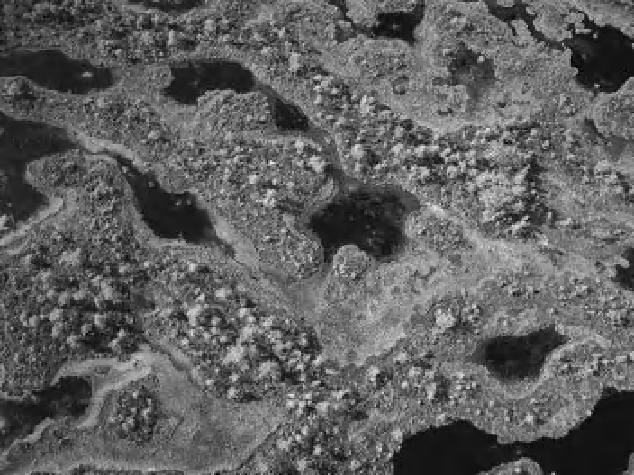Geoscience Reference
In-Depth Information
Figure 16-50.
Vertical view over central portion of Männikjärve Bog, east-central Estonia (see Color Plate 16-50).
Striking color zonation and intricate spatial patterns of pools, moss, and other vegetation are displayed in this
autumn scene, which is
∼
100 m across. Kite aerial photo (Aber and Aber 2005).
distance from a water channel and salinity
levels. The long history of human settlement
across the North Atlantic coast has inl uenced
these ecosystems. Anthropogenic changes
through the building of tidal restrictions have
altered salt-marsh systems and made them less
productive and more susceptible to invasive
species like
Phragmites australis
. Conservation
and restoration efforts are supported by the
NERR program at the Wells Reserve in Maine
and research from LTER sites like Plum Island
Estuary in Massachusetts. Such efforts are fun-
damental to securing the future of these ecosys-
tems and in turn supporting economically vital
industries for both Maine and Massachusetts.
Estonia is situated at the northern margin of
the middle-latitude zone. The country is sur-
rounded on three sides by brackish water of the
Baltic Sea, and Lakes Peipsi-Pihkva bound the
eastern side. More than one-i fth of the country
is covered by mires, and coastal wetlands are
extensive in the western islands and shallow
seal oor. The western mainland, islands, and
northern margin of Estonia are parts of the
Baltic Coast Bog Province; whereas, eastern
Estonia is in the East Baltic Bog Province. Given
approximately 12,000 years since deglaciation
of Estonia, several millennia were required for
the processes of paludii cation and terrestriali-
zation to initiate fens in which peat could begin
to accumulate, which took place generally
between 7000 and 4000 years ago during the
mid-Holocene climatic optimum. The major time
for raised bog development was between 4000
and 2000 years ago. Estonia has a long history
of mire investigations, in which the Endla mire
complex has played a leading role for more than
a century.





